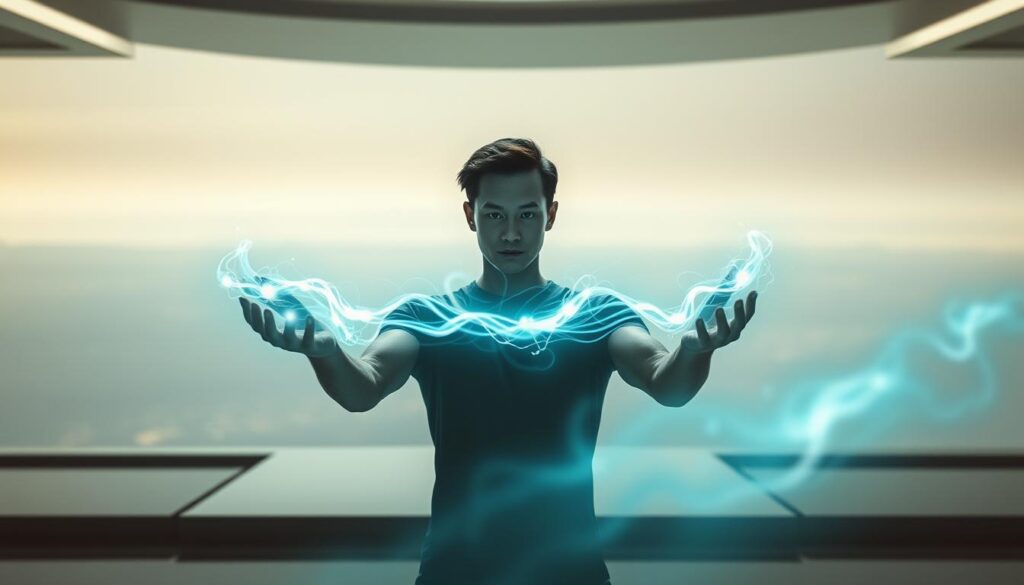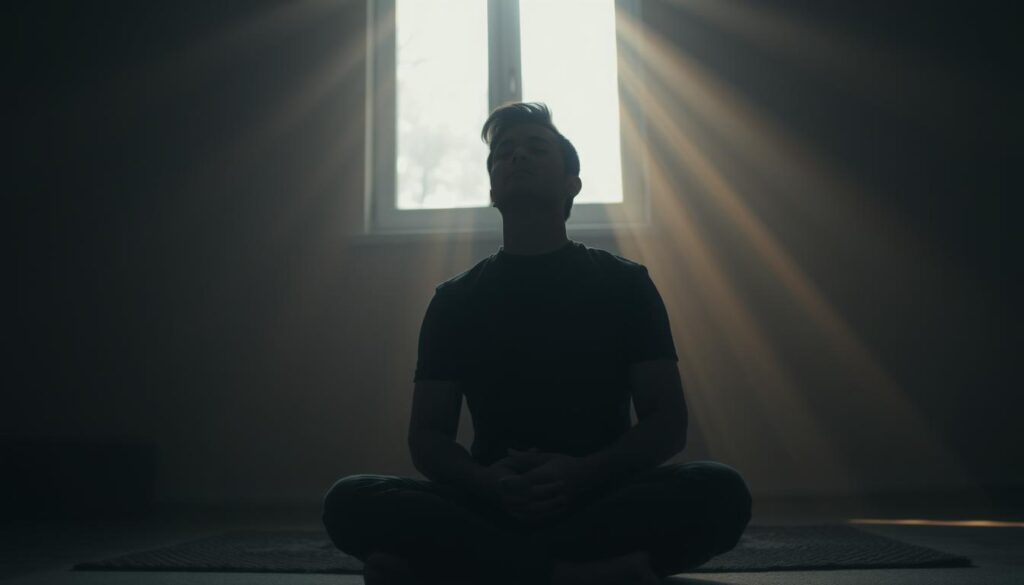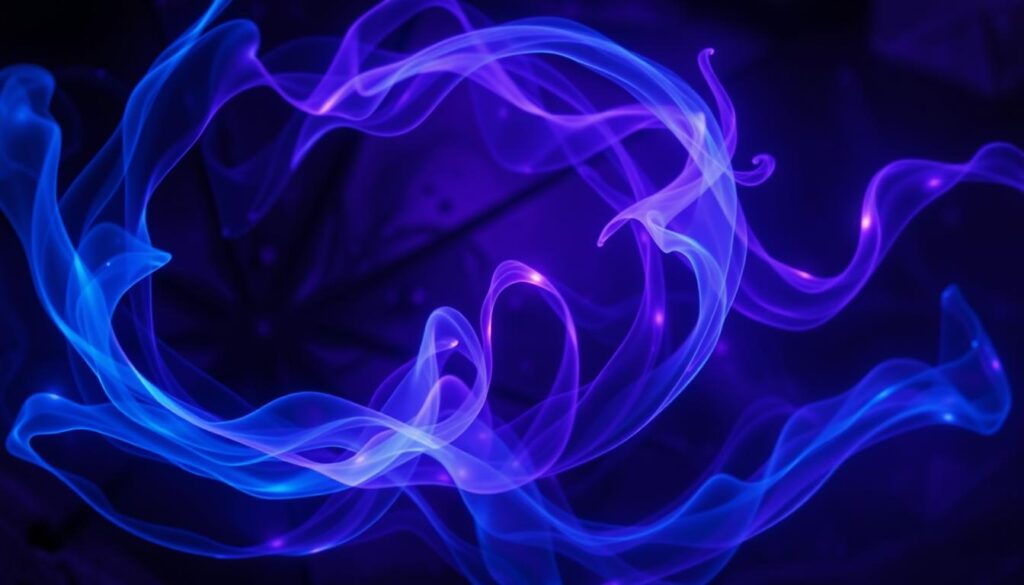Have you ever wondered if the power of the mind could transcend physical boundaries? Psionic remote viewing, a fascinating blend of science fiction and real-world exploration, offers a glimpse into this possibility. This technique allows individuals to perceive distant locations or events using only their mental energy and focus.
Rooted in early scientific proposals and popularized through literature and role-playing games, psionic abilities have captivated thinkers and creators alike. From classic novels to modern-day workshops, the concept of harnessing psychic skills continues to inspire curiosity and innovation.
Whether you’re a seasoned enthusiast or a curious beginner, this guide will introduce you to the fundamentals of remote viewing. Discover how this unique ability bridges the gap between imagination and reality, and prepare to explore the limitless potential of the human mind.
Key Takeaways
- Psionic remote viewing uses mental energy to perceive distant locations.
- It blends science fiction with real-world applications.
- The concept has roots in early scientific and literary works.
- It continues to inspire curiosity and innovation today.
- This guide will help you understand its fundamentals.
The Science and Fiction of Psionic Powers
Exploring the origins of mental powers reveals a blend of science and imagination. The term “psionics” first appeared in 1951, coined by science fiction writer Jack Williamson. It combined the Greek letter “psi,” representing psychic phenomena, with modern electronics. This fusion of ideas laid the groundwork for a fascinating concept that continues to captivate minds today.

Historical Origins and Etymology
The roots of psionic powers trace back to early parapsychology. In 1942, Bertold Wiesner and Robert Thouless introduced “psi” to describe extrasensory perception and psychokinesis. Their work aimed to explore the unknown factors behind these abilities. Over time, the term evolved, blending scientific curiosity with creative storytelling.
Science fiction played a pivotal role in popularizing psionic powers. Writers like Jack Williamson and Murray Leinster brought these ideas to life in stories like “The Psionic Mousetrap.” These narratives not only entertained but also sparked discussions about the potential of the human mind.
The Psi-Boom in Classic Science Fiction
The 1950s and ’60s marked a cultural phenomenon known as the “psi-boom.” During the Cold War, science fiction authors explored extraordinary mental abilities as a reflection of societal anxieties. Characters with psionic powers became symbols of hope and fear, illustrating the limitless potential of human energy.
John W. Campbell, a prominent editor, promoted psionic devices like the Hieronymus machine. Despite skepticism from the scientific community, these ideas captured the public’s imagination. Critics like Martin Gardner questioned their validity, but the fascination with psionic powers persisted.
Today, the legacy of the psi-boom lives on in literature, games, and media. From iconic characters to immersive storytelling, psionic powers remain a testament to the enduring allure of the unknown. For more insights into this fascinating topic, visit our detailed guide.
Understanding Remote Viewing Techniques and Benefits
Remote viewing techniques have fascinated both scientists and enthusiasts for decades. This practice involves using the mind to perceive distant locations or events, often described as a blend of mental focus and intuitive energy. Whether you’re a beginner or an experienced practitioner, mastering these techniques can unlock new levels of perception and insight.

Practical Methods for Enhancing Remote Viewing
One effective method is Coordinate Remote Viewing (CRV), developed by Ingo Swann. This structured approach involves six stages, helping practitioners refine their ability to visualize distant targets. Another technique is the “Quiet the Mind” exercise, which reduces mental clutter and enhances focus. Regular practice is key to improving accuracy and confidence.
For those starting out, simple visualization exercises can be helpful. Try focusing on a familiar object and describing it in detail. Over time, this builds the mental discipline needed for more advanced techniques. Advanced practitioners often incorporate feedback sessions to analyze and refine their results.
Tips for Beginners and Advanced Practitioners
Beginners should start with short, consistent practice sessions. Focus on developing a calm and clear mental state. Avoid overthinking—trust your instincts and let your psychic senses guide you. For advanced practitioners, experimenting with different methods, such as group sessions or timed exercises, can provide new challenges and insights.
Remote viewing isn’t just about seeing distant places; it’s about expanding your awareness. Many find that it enhances creativity, problem-solving, and even personal growth. As you explore these techniques, remember that patience and persistence are your greatest allies.
Harnessing Psionic Energy for Enhanced Remote Viewing
Unlocking the potential of your mind can transform how you perceive the world. By channeling psionic energy, you can enhance your remote viewing abilities and tap into a deeper level of intuition. This process requires mental discipline, focus, and a willingness to explore the unknown.

The Role of Mental Discipline and Mind Power
Mental discipline is the cornerstone of effective psionic power. Without it, even the most intuitive abilities can falter. Practicing mindfulness and concentration exercises helps build the mental resilience needed for remote viewing. As the saying goes, “The mind is a powerful tool when trained correctly.”
Here are some key strategies to strengthen your mental discipline:
- Practice daily meditation to clear mental clutter.
- Engage in visualization exercises to sharpen focus.
- Set specific goals for each remote viewing session.
Integrating Intuition with Psionic Techniques
Intuition plays a vital role in psionic practices. By combining intuitive insights with structured techniques, you can achieve more accurate and meaningful results. For example, Coordinate Remote Viewing (CRV) integrates intuition with a step-by-step approach to enhance accuracy.
Here’s a comparison of traditional and intuitive methods:
| Method | Focus | Outcome |
|---|---|---|
| Traditional CRV | Structured steps | High accuracy |
| Intuitive Approach | Spontaneous insights | Creative solutions |
“The true power of psionics lies in the balance between discipline and intuition.”
By mastering these techniques, you can unlock new levels of psychic ability and explore the limitless potential of your mind. Remember, consistency and patience are key to achieving success in this fascinating field.
Psionic Powers in Pop Culture and Role-Playing Games
From comic books to tabletop games, psionic powers have left a lasting mark on pop culture. These extraordinary abilities, often tied to the mind and energy, have inspired iconic characters and shaped the narratives of beloved franchises. Whether through telepathy, telekinesis, or other psychic skills, psionics continue to captivate audiences worldwide.
Iconic Psionic Characters and Their Abilities
Many legendary characters are known for their psionic powers. Professor X from Marvel Comics is a prime example, using his telepathy to lead the X-Men. Jean Grey, another Marvel icon, wields immense psychic energy, often manifesting as the Phoenix Force. These characters showcase the blend of power and emotion that defines psionics.
In anime, characters like Tetsuo Shima from Akira demonstrate the destructive potential of uncontrolled psionic abilities. His journey highlights the balance between mind and energy, a recurring theme in psionic storytelling.
Psionics in Dungeons & Dragons and Beyond
Psionics have a rich history in Dungeons & Dragons, dating back to the Eldritch Wizardry book. Early psionic monsters like Mind Flayers set the stage for a unique system of abilities. The Dark Sun setting further popularized psionics, making it a common power among characters like Thri-Kreen and Athasian Gith.
In D&D 5e, psionics are represented through subclasses like the Aberrant Mind Sorcerer and Psi Warrior Fighter. These classes integrate psionic energy into the game’s mechanics, offering players new ways to explore their characters’ potential.
Despite some criticism, psionics remain a beloved part of D&D lore. Their distinct flavor and narrative depth continue to inspire players and storytellers alike.
Conclusion
The journey into psionic remote viewing reveals a blend of history, technique, and creativity. From its roots in early scientific research to its portrayal in pop culture, this ability continues to inspire curiosity and innovation. The disciplined use of mental energy and intuitive practices has proven to bridge the gap between imagination and reality.
Psionic techniques, such as remote viewing, have not only influenced personal development but also shaped fictional narratives in literature and gaming. Characters with psychic powers, like Professor X and Jean Grey, remind us of the limitless potential of the human mind.
As we look to the future, the exploration of psionic methodologies remains a fascinating field. Whether you’re a beginner or an advanced practitioner, the key lies in consistent practice and an open mind. Embrace the journey, and discover how these powers can enhance your perception of the world.

